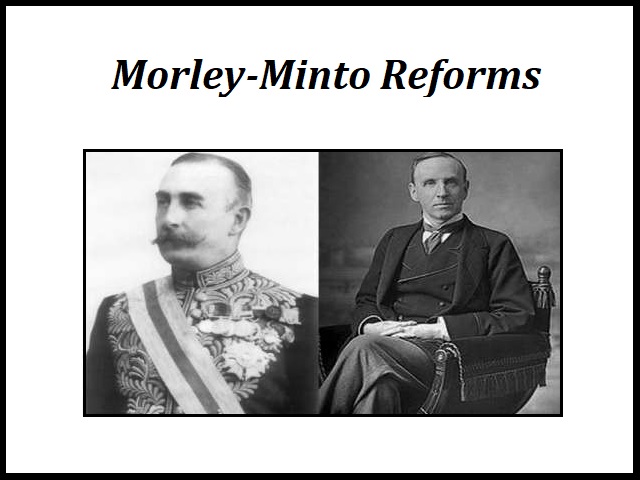Gopal Krishna Gokhale also went to England to meet the secretary of state, John Morley, to put the congress's demand for self-governance similar to the practice carried out in other British Colonies. John Morley was then the member of the Liberal Government, and was incline towards making positive changes in the administration of India and thus took into the request of the Indians under consideration.
Minto-Morley Reforms, gets its name for the two viceroys who agreed to consider the individual requests of the Indians and Muslim Indians. John Morley and Lord Minto played a very important role in drafting the key points of the charter as a part of the Indian Council Act, 1909.
Main Provisions of the Minto-Morley Reforms
1. After Indian council act 1909 , for the first time Indian were allowed to participate in the election of various legislative councils, though on the basis of class and community.
2. For the first time a separate electorates were created for Muslims to be elected into the central council.
3. For the first time the numbers of elected members for the both Imperial legislative council and provincial legislative council were increased.
4. For the first time Indians were given membership to the Imperial Legislative Council.
5. For the first time the members could discuss the budget and move resolutions. They could also discuss matters of public interest although no discussions on foreign policy or on relations with the princely states were permitted.
6. For the first time an Indian was elected to the executive council. He was Satyendra Sinha.
7. For the first time, two Indians were nominated to the Council Of the Secretary of State for Indian Affairs.
Analysis Of the Reform
The Minto-Morley Reforms looked very appealing and some would have thought it was the beginning of self-governance for India. However, the reality of the matter was strikingly different.
The reform never mentioned the establishment of a representative government for Indians, they only appointed some Indians into the British-dominated legislatures in order to pacify the Indians.
They appointed very few Indians to high positions and that too only those of their own choice and not those selected by the Indians themselves.
Whether it was the nomination of Satyendra Sinha to the viceroys executive council or the selection of Indians to various legislative councils, the British always had a final say in the matter of candidature.
Therefore, the reforms were nothing but a way of appeasing the Indians, to keep them from commencing a cry for self-governance.
Written By - Shivam Jha
Edited By - Tushna Choksey






.jpeg)


0 Comments